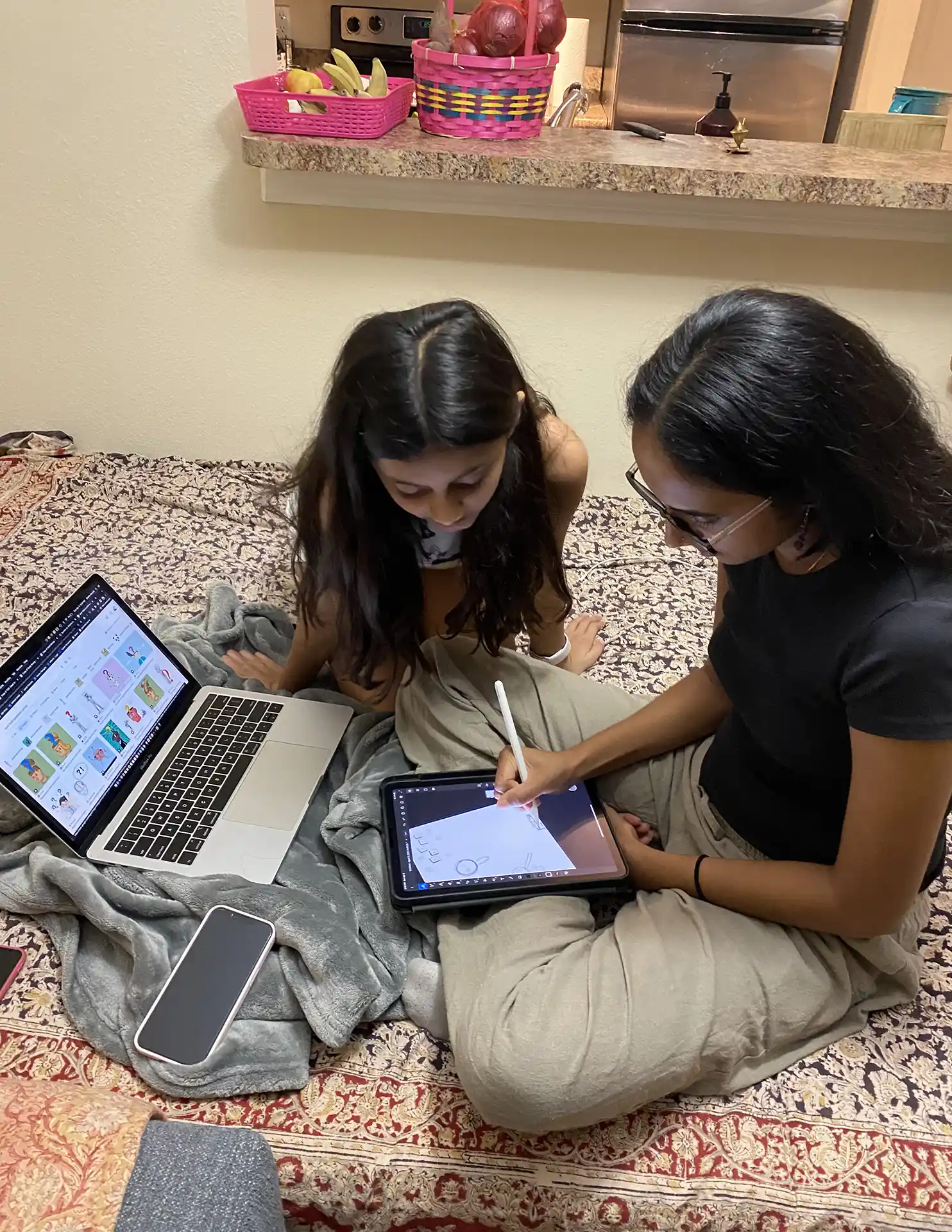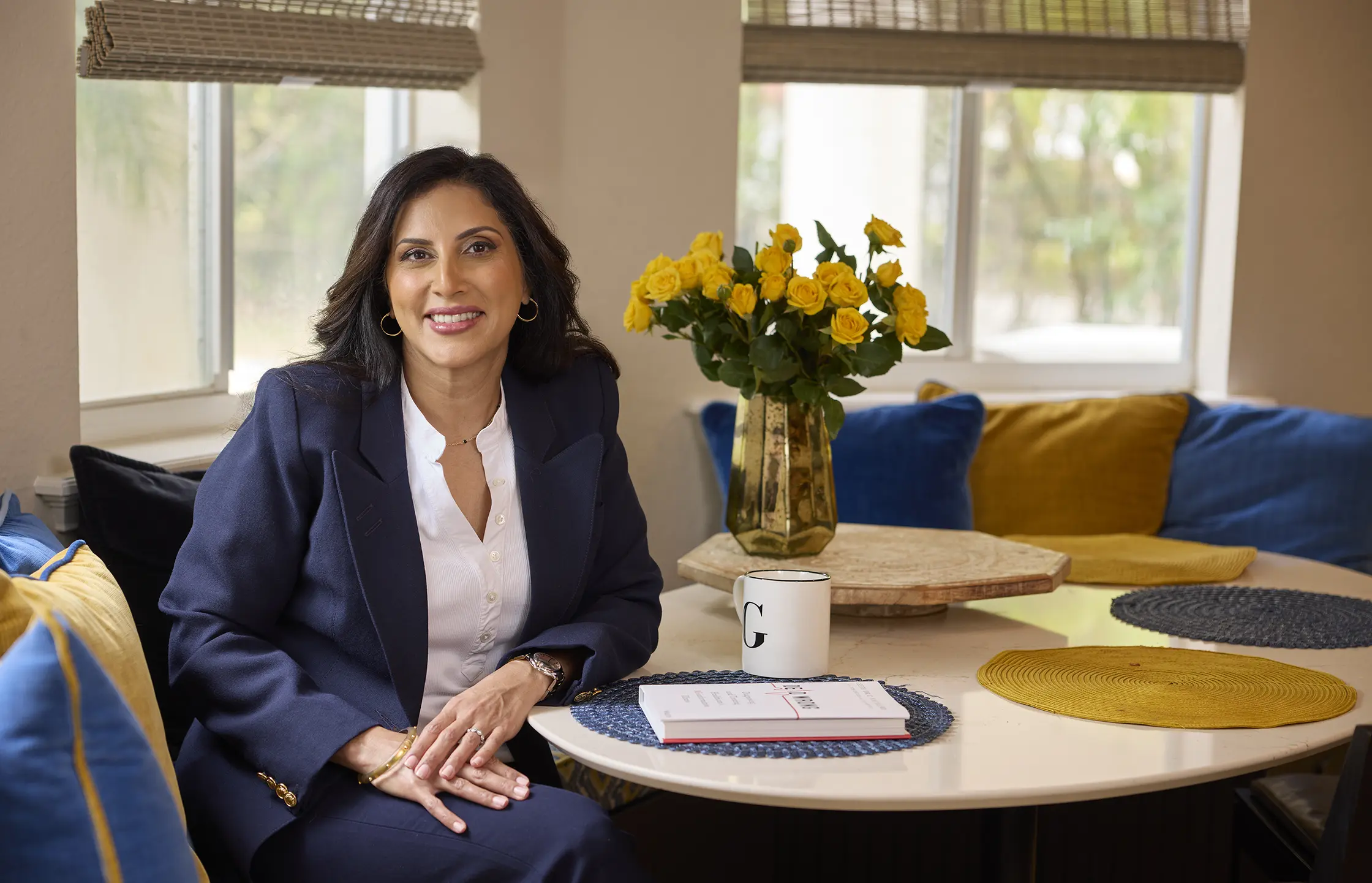What the New Digital Era Means for Physicians
Entrepreneur and author Dr. Geeta Nayyar helps the health care industry adapt to the new digital landscape
By Debby Teich
Photography by Jeffery Salter

Dr. Nayyar’s daughter, Sonia, and Miller School medical student, Sneha Akurti, working on graphics for her book.
A
rheumatologist by training, Geeta Nayyar, B.S. ’99, M.D. ’03, M.B.A., is a nationally recognized leader in health technology who has been bridging the gap between clinical medicine, the business sector and digital health. She consults for several influential medical organizations and lectures on topics such as emerging health tech, artificial intelligence, digital health, and the business of health care. She recently published Dead Wrong: Diagnosing and Treating Healthcare’s Misinformation Illness, which examines the rise of medical misinformation in the digital age. We talked to Dr. Nayyar about her experiences at the Miller School and beyond.
What inspired you to write your book?
Disinformation and misinformation have always created confusion around science, but social media and AI are now spreading it more quickly. Truth and fiction are often indistinguishable. The health care industry must embrace the rapidly evolving digital landscape by disseminating accurate and comprehensive information to improve health literacy, advance strategic business goals and protect the patient-physician relationship. This will empower patients, health care professionals and policymakers.
How will your book help medical students?
Medical students should be ready to meet the changing needs of consumers who are expecting more from health care. In this new era of technology, doctors don’t just need to inform, they also need to influence. They must understand how to use technology and marketing to help build their practices and create their own brands. I hope that my book will help the next generation of physicians prepare for their future careers.
How did the Miller School set you up for success?
In addition to exceptional medical training, the Miller School provided me with opportunities to explore career paths outside of clinical and academic medicine. I had amazing mentors, including Drs. Alex and Hilit Mechaber, who guided me in medical school and throughout my entire journey.
Are you still involved at the Miller School?
I am currently on the board of the Medical Alumni Association and give talks to medical student organizations. I also volunteer for the Wolfson DOCS program, which is how I met Sneha Akurti, a first-year Miller School medical student who, along with my daughter, Sonia, illustrated my book.
Why should alumni support the school’s future?
It is important that we pay it forward. We have tremendous talent at the Miller School, and we all benefit when we rise as a community to make the future better for the school and the medical community. There are so many fulfilling ways to help. ![]()



